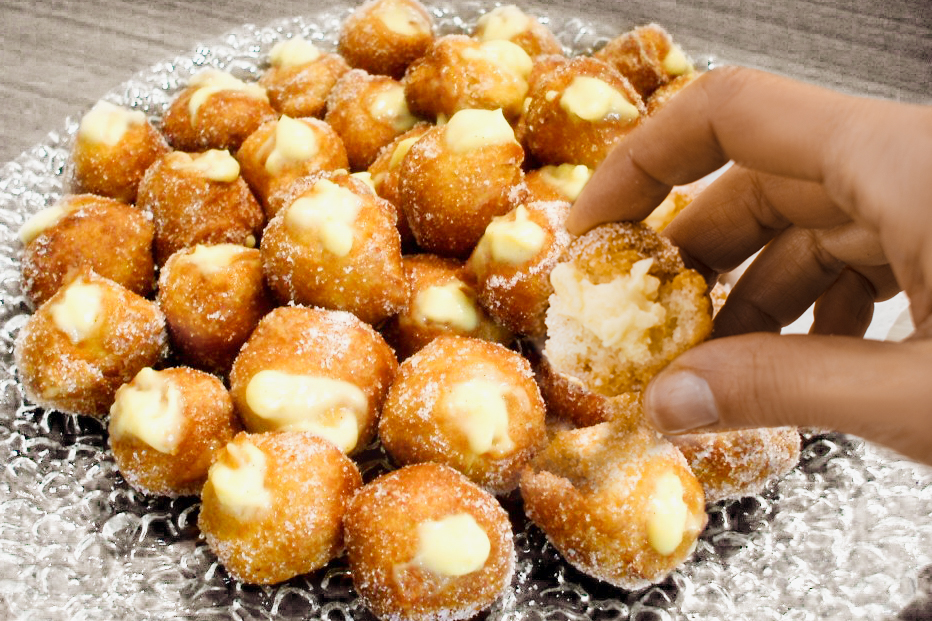Learn how to make authentic Italian Zabaione recipe! This easy Zabaione tutorial will have you whipping up this delicious dessert in no time. Whether you’re new to cooking or a seasoned pro, this recipe is perfect for anyone looking to make a classic Italian dessert. Simple, yet flavorful, this zabaione will be a hit at your next dinner party or family gathering!
This Zabaione is an absolute game changer! I had to share this simple recipe with you because it’s so delicious! All you need are eggs, sugar, a splash of liqueur, and you’re good to go. In less than 10 minutes, you’ll have the most incredible Zabaione you’ve ever eaten.
Growing up in Italy, my mom would whip up this creamy Zabaione in just minutes during the holiday season. This version from Parma uses dry Marsala wine and rum to give it an adult kick while keeping that nostalgic vibe. The rich, creamy texture and slightly boozy flavor just warms your soul. I like to serve mine while warm, with some cookies to dip in – it’s heaven!
I know once you try this recipe, you’ll want to make it all year round. So grab your eggs, sugar and liqueur and let’s make some Zabaione memories of our own!
The History of Italian Dessert Zabaione
The Italian dessert Zabaione, also known as Zabaglione, has a rich history dating back to the 16th century. It originated in Italy, specifically in the Piedmont region. Zabaione is a light and frothy custard made from egg yolks, sugar, and a sweet wine, traditionally Marsala. The dessert is often served warm, accompanied by fresh fruit or used as a topping for cakes and pastries.
Historically, Zabaione was considered a luxurious treat enjoyed by the nobility and upper class in Italy. The dessert’s name is believed to have derived from the word “zabaglione,” meaning “sweet wine,” highlighting the key ingredient used in its preparation.
Over the years, Zabaione has become a beloved dessert in Italian cuisine, celebrated for its creamy texture and delicate flavor. While Marsala wine is the traditional choice, variations of the recipe may include other sweet wines or spirits to suit different preferences.
Today, Zabaione remains a popular dessert in Italy and beyond, cherished for its simplicity, elegance, and delightful taste. Its long-standing presence in culinary traditions reflects a rich heritage of Italian gastronomy and a testament to the enduring appeal of this classic sweet treat.
Authentic Zabaione Ingredients
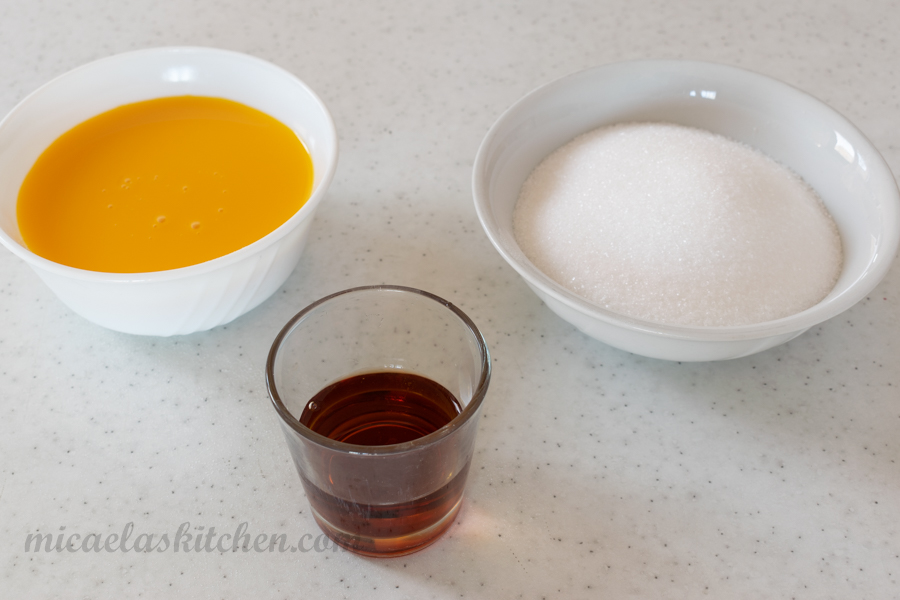
The authentic ingredients used in a traditional Zabaione recipe include:
- Egg Yolks: The base of Zabaione is made from egg yolks, which give the dessert its creamy and rich consistency.
- Sugar: Sweetens the custard and balances the flavors of the other ingredients.
- Marsala Wine: A sweet Italian fortified wine that provides a distinct flavor and aroma to the Zabaione. It is a key ingredient in the traditional recipe. You can also use 2/3 Marsala and 1/3 Rum, like I did in this recipe.
- Chocolate chips and “cat’s tongue” biscuits, for serving (optional)
These simple ingredients are essential for creating the classic and authentic Zabaione dessert, a beloved Italian delicacy known for its velvety texture and delightful taste. The combination of egg yolks, sugar, and Marsala wine results in a luscious custard that is typically served warm and enjoyed as a standalone dessert or paired with fresh fruit or desserts like panettone or sponge cake.
Are There Any Ingredients I Can Replace in the Zabaione Recipe?
When it comes to making adjustments to a Zabaione recipe, there are a few ingredient substitutions you can consider based on dietary preferences or ingredient availability. Here are some common ingredient swaps for Zabaione:
Wine: While Marsala wine is the traditional choice for Zabaione, you can substitute it with other sweet wines like sherry or Madeira, or with Rum. For a non-alcoholic version, you can use fruit juice, such as apple juice or grape juice.
Sugar: If you prefer a different sweetener, you can replace sugar with honey, maple syrup, agave nectar, or a sugar substitute like stevia or erythritol for a keto version of Zabaione. Adjust the amount based on sweetness preference.
Eggs: If you have dietary restrictions or allergies, you can try using pasteurized liquid egg yolks or egg replacers. Keep in mind that the texture and flavor may vary slightly.
Flavorings: To add a twist to the traditional Zabaione, you can experiment with different flavorings such as vanilla extract, citrus zest (lemon or orange), cinnamon, or nutmeg. These additions can enhance the overall taste of the dessert.
By making these ingredient substitutions, you can customize the Zabaione recipe to suit your dietary needs or taste preferences while still enjoying a delicious and creamy Italian dessert. Feel free to get creative and tailor the recipe to your liking!
Zabaione Video Tutorial
How To Make Zabaione Recipe
Heat up some water in a saucepan over medium-low heat. We’re going to use this water bath to cook our egg mixture nice and gentle.
In a bowl, suitable for a water bath, add egg yolks, sugar and liqueur. Take a whisk and mix it all together. Don’t go too crazy though, we want it smooth but not whipped. Once that water is simmering away, place the bowl right on top but not touching the water. Whisk and watch as it starts to magically change before your eyes. At first, it’ll be all foamy, then it’ll slowly thicken up while the bubbles disappear. Keep whisking steadily – we don’t want any lumps sneaking in to ruin it!
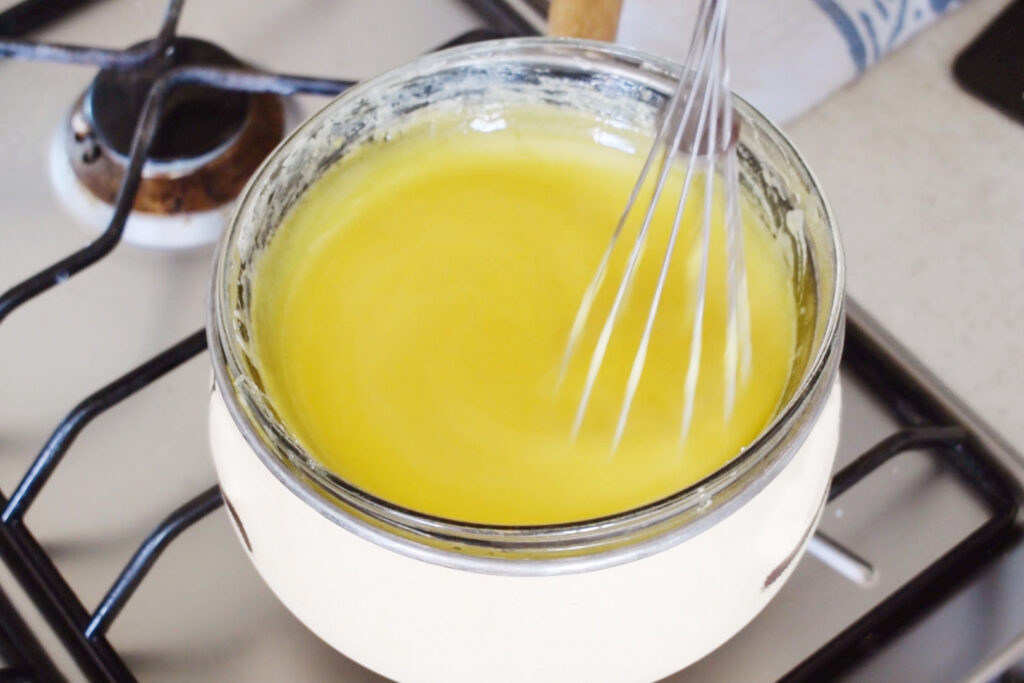
When it’s looking good and thick, use a thermometer to check the temperature. Around 83°C (181°F) is perfect. If you don’t have a thermometer, just watch the whisk. It should be leaving nice ribbons behind as you stir.
Serve that Zabaione up right away, either hot or warm. Enjoy alongside some biscuits or chocolate – it’s the perfect treat for the holidays!
Tools you Will Need
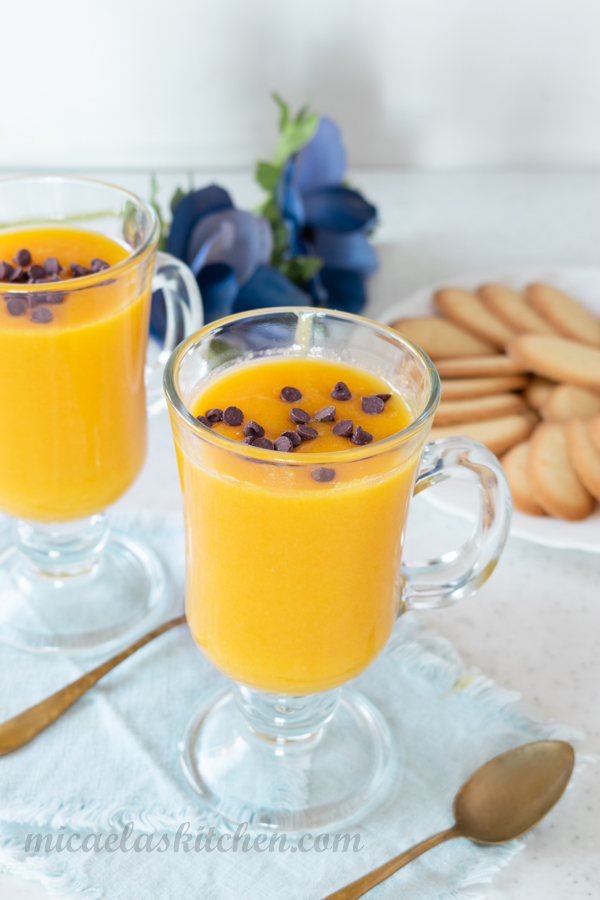
How to Store Zabaione Dessert
Zabaione is best enjoyed fresh when it is at its peak flavor and texture. Try to make only the amount you will consume to savor its delicate taste.
If you have leftover Zabaione, store it in an airtight container in the refrigerator. Make sure it is cooled to room temperature before refrigerating. It is best to consume Zabaione within 2-3 days for the best taste and quality. Due to its delicate nature, Zabaione does not freeze well. Freezing can cause the custard to separate and lose its creamy texture.
If you want to enjoy leftover Zabaione, gently reheat it in a double boiler over simmering water. Stir continuously to prevent curdling and heat until it reaches your desired temperature. Do not microwave Zabaione as it can cause uneven heating and alter the texture.
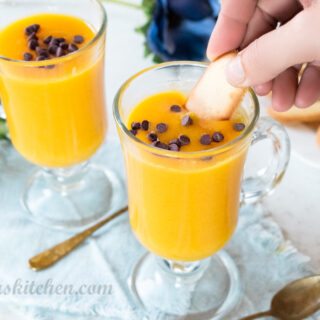
Zabaione Recipe, A Classic Dairy-Free 3-Ingredient Italian Cream (With Keto Version)
Ingredients
- 36 cl dry Marsala (1 1/2 cup) or 2/3 Marsala and 1/3 Rum
- 12 egg yolks
- 240 g granulated sugar (1.2 cup)
Instructions
- Heat up some water in a saucepan over medium-low heat. We will use this water bath technique to slowly and gently cook our egg mixture.
- In a heat-resistant bowl suitable for a water bath, add the egg yolks, sugar and liqueur. Take a whisk and mix the ingredients together smoothly, but without over-mixing.
- Once the water reaches a gentle simmer, place the bowl on top of the saucepan, but not touching the water.
- Whisk steadily while monitoring the mixture as it begins to transform before your eyes. Initially it will become foamy, then it will gradually thicken as the bubbles disappear. Continuously whisk without pause to ensure no lumps form which could compromise the smooth texture.
- When the mixture has thickened to the proper consistency, use a thermometer to check the temperature, aiming for approximately 83°C (181°F), the optimal point. If a thermometer is unavailable, watch the whisk and wait for the ribbons left behind with each stroke to indicate full development.
- Serve the zabaione immediately while still warm, either hot or at a lower temperature. Enjoy alongside biscuits or chocolate for a delightful treat, perfect for holiday celebrations and gatherings.







